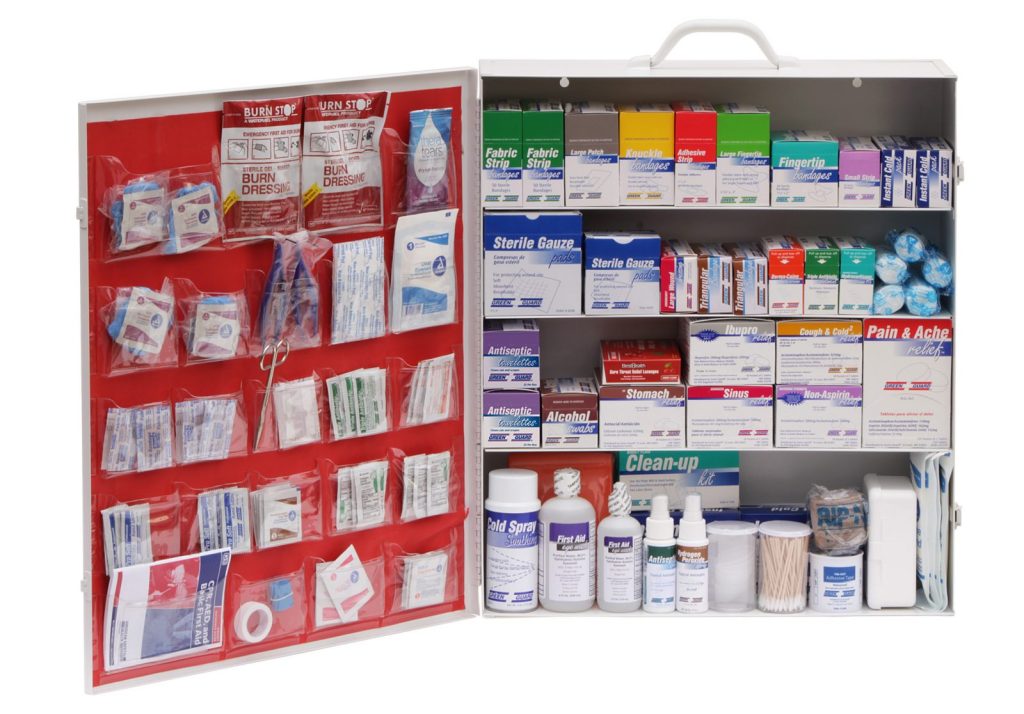5 Reasons Why Employees Need First Aid Training

OSHA requires businesses to provide first aid and CPR training to employees in the absence of a nearby clinic or hospital (OSHA Standard 1910.151).
While safety always begins with prevention, not every work-related injury can be prevented. Your primary first aid training goal should be to give employees the necessary tools and information they need to care for an ill or injured person, if necessary until advanced help arrives.
OSHA does not teach or certify programs. Therefore, employers are faced with numerous programs to choose from, and the choice can be difficult. Because of this, a consensus group comprised of a panel of government and private experts developed the National Guidelines for First Aid in Occupational Settings in 1997.
This detailed curriculum identifies the skill training that makes a workplace first aid responder competent to provide care. Responding to OSHA’s requirement that every employer provides first aid assistance in the workplace, these guidelines document the minimum knowledge and skills necessary for an individual to provide basic life support care to an ill or injured person until the professional emergency response arrives.
While starting a first aid program can be simple and inexpensive, it involves several essential steps:
1. Recognize that it is your responsibility as an employer to determine the requirements for your first aid program. As you assess your workplace, be mindful of the job site or work process that could cause illness or injury to employees. What types of accidents could reasonably occur in your workplace? Consider such things as falls, hazardous machinery, and exposure to harmful substances. Be sure to put your evaluation in writing for reference purposes. Remember that, while OSHA does not recommend nor approve programs, it may evaluate your program’s adequacy during an inspection.
2. Assess the location and availability of a medical facility to your workplace. If a hospital, clinic, or other such emergency response is not readily available, for instance, within three to four minutes, you must have at least one employee trained in first aid and CPR per shift. There is no recommended number of trained employees to have on staff; it largely depends on your facility’s size and type of operations. Responding in a timely manner can mean the difference between life and death, so it is crucial that you have an appropriate number of employees trained.
For organizations with multiple sites, a larger number of employees must be trained. Many experts believe all employees should know how to provide first aid and CPR to ensure that help is always at hand. At a minimum, each department or location should have a responder available on each shift.
3. Make sure you have suitable first aid supplies readily available at all times.

Effective Aug. 17, 1998, OSHA added an Appendix A to its very basic First Aid and Medical standard found in 29 CFR 1910.151. It requires the employer to reference ANSI Z308.1-1978, Minimum Requirements for Industrial Unit-Type First Aid Kits.
According to OSHA, the contents of the kit listed in the ANSI standard should be adequate for small worksites. However, larger or multiple operations should consider the need for additional first aid kits and additional types of first aid equipment and supplies in larger quantities. OSHA suggests consulting a local fire and rescue department appropriate medical professional or first aid supplier for assistance in these circumstances.
4. OSHA recommends you periodically assess your kit and increase your supplies as needed. Place your first aid supplies in an easily accessible area, and inform all your employees of its location. Along with a well-stocked, workplace-specific first aid kit, other basic supplies normally include emergency oxygen, blankets, stretchers, directional signs, eyewash stations, and burn stations.
In addition to these items, if blood-related incidents are anticipated, you must provide appropriate personal protective equipment (PPE) as mandated in OSHA’s Blood-borne Pathogens standard (29 CFR 1910.1030). It lists specific PPE for this type of exposure, such as gloves, gowns, face shields, masks, and eye protection.
5. On-site safety inspections, review of hazards and emergency dispatch, assessment, implementation, escape, and treatment should be discussed in your training program. Employees must be trained to act and think quickly to avoid delayed treatment during an emergency. Ask yourself, whether each employee knows how to report an injury or illness.
Outline the accident investigating and reporting procedures and relay that to your employees as part of your company’s policy. Early recognition and treatment of an injury or illness are essential.
Employees must be aware of emergency contact information. It is best to post emergency procedures and emergency office contact numbers with your first aid supplies or in another highly visible and accessible area. Make sure that your field personnel also have suitable supplies and office contact numbers readily available. Appoint an employee in each department to watch for hazards and evaluate its current first aid status. Set a deadline to report any hazards or first aid needs to a manager or supervisor for improvement or correction.
Since people tend to forget their first aid training over time, OSHA recommends refresher training be conducted to recharge employees’ knowledge of first aid procedures. At a minimum, employees should be certified annually to perform CPR and once every three years to perform first aid. If such training sounds burdensome, consider that it can produce safer work practices and fewer incidents among employees.
Keeping the workplace safe involves three basic elements:
- Steps to prevent or minimize accidents
- Adequate first aid supplies
- Proper first aid training.
The employer uses training to make sure its employees know what to do, how to do it, and who is in charge in case a first aid or emergency situation occurs. Proper first aid training not only satisfies OSHA requirements but fosters goodwill among employees, who recognize the care that their company expends to provide a safe and healthy environment for its most valuable asset: its employees.
